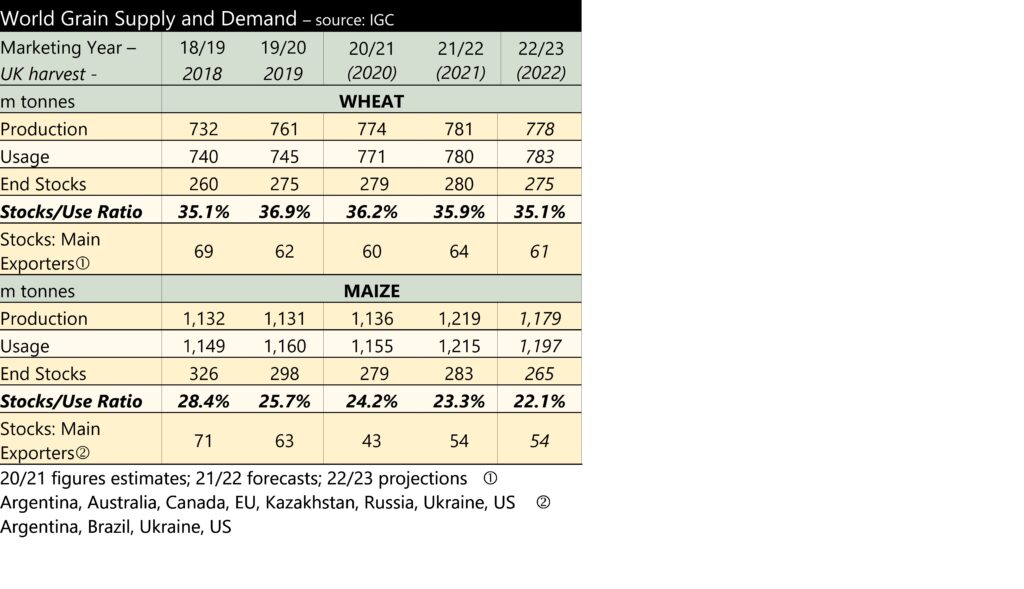Global factors have been key for grain pricing in June, with wheat moving up, largely supported by maize.
Maize has been the significant driver of global grain prices, with drought conditions seemingly worsening through to 20th June. A USDA report of that date showed 67% of the US maize crop to be in moderate to extreme drought. Some parts of the ‘Corn Belt’ have now received rain, but much more is needed and at present this is not forthcoming in the forecast.
There is still significant time to go until the crop is harvested. The crop will begin silking (flowering) soon. Once silking starts, soil moisture, or lack thereof, will become increasingly important for yields.
At present, the USDA are forecasting a record maize crop for the US (388 million tonnes), based on a trend yield. Additionally, US maize ending stocks are forecast to grow by more than 20 million tonnes. With world maize stocks expected to grow by 16 million tonnes, year-on-year, any problems with US production would be supportive of grain prices. This remains an ongoing watch point.
Another key supportive factor for wheat prices is the situation in Ukraine. The short-lived rebellion by the Wagner Mercenaries on 24th June led to some increases in wheat price during the day on Monday. The Black Sea Grain Initiative is also due on 17th July; posturing by all sides in the run up to this date will be a key influencer of price.
The outlook for crops in the EU worsened in June, with the EU Joint Research Centre revising its yield forecasts for all crops lower. For winter crops, most forecasts remain above the five-year average. A key driver of the cuts to yield forecasts is the dry conditions being experienced by much of Northern Europe.




